
Edward Henry Weston was a 20th-century American photographer. He has been called "one of the most innovative and influential American photographers" and "one of the masters of 20th century photography." Over the course of his 40-year career Weston photographed an increasingly expansive set of subjects, including landscapes, still lifes, nudes, portraits, genre scenes and even whimsical parodies. It is said that he developed a "quintessentially American, and especially Californian, approach to modern photography" because of his focus on the people and places of the American West. In 1937 Weston was the first photographer to receive a Guggenheim Fellowship, and over the next two years he produced nearly 1,400 negatives using his 8 × 10 view camera. Some of his most famous photographs were taken of the trees and rocks at Point Lobos, California, near where he lived for many years.

Medan is the capital and largest city of the Indonesian province of North Sumatra. The nearby Strait of Malacca, Port of Belawan, and Kualanamu International Airport make Medan a regional hub and multicultural metropolis, acting as a financial centre for Sumatra and a gateway to the western part of Indonesia. About 60% of the economy in North Sumatra is backed by trading, agriculture, and processing industries, including exports from its 4 million acres of palm oil plantations. The National Development Planning Agency listed Medan as one of the four main central cities in Indonesia, alongside Jakarta, Surabaya, and Makassar.
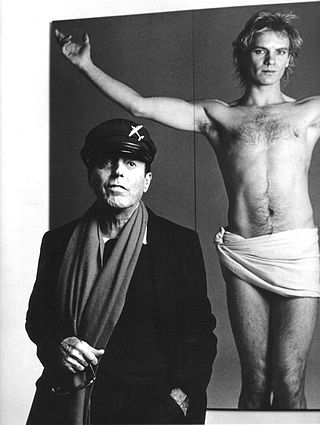
Francesco Scavullo was an American fashion photographer best known for his work on the covers of Cosmopolitan and his celebrity portraits.
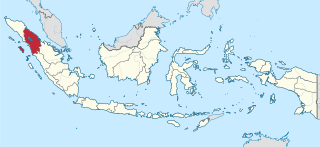
North Sumatra is a province of Indonesia located on the northern part of the island of Sumatra. Its capital and largest city is Medan. It is bordered by Aceh on the northwest and Riau and West Sumatra in the southeast, with two different coastlines located on the Indian Ocean and the Strait of Malacca, and a maritime border with Malaysia to the east. The province also shares a very narrow maritime border with Thailand to the northeast. North Sumatra is Indonesia's fourth most populous province after West Java, East Java and Central Java, and the third-largest province on the island of Sumatra after the neighbouring Riau and South Sumatra. It covers an area of 72,981 km2. According to the 2020 census, the province's population in that year was 14,799,361. The mid-2022 official estimate was 15,115,206. North Sumatra is a multi-ethnic province. The Malay people are regarded as the natives of the east coast of the province, while the west coast of the province is mainly inhabited by the Batak. The central highlands region around Lake Toba is predominantly inhabited by other Batak groups. The Nias people are natives to Nias Island and its surrounding islets. With the opening of tobacco plantations in East Sumatra during the colonial era, the colonial government employed many contract labourers for plantations, mainly Chinese, Javanese and Indian migrants. The majority did not return after their contract ended and decided to stay in the province. The recent rapid urbanisation also attracted neighbouring people from Aceh, Riau and West Sumatra.
Bill Brandt was a British photographer and photojournalist. Born in Germany, Brandt moved to England, where he became known for his images of British society for such magazines as Lilliput and Picture Post; later he made distorted nudes, portraits of famous artists and landscapes. He is widely considered to be one of the most important British photographers of the 20th century.
Erotic photography is a style of art photography of an erotic, sexually suggestive or sexually provocative nature.

Nude photography is the creation of any photograph which contains an image of a nude or semi-nude person, or an image suggestive of nudity. Nude photography is undertaken for a variety of purposes, including educational uses, commercial applications and artistic creations. The exhibition or publication of nude photographs may be controversial, more so in some cultures or countries than in others, and especially if the subject is a minor.

Lotte Herrlich (1883–1956) was a German photographer. She is regarded as the most important female photographer of the German naturism. This mainly was during the 1920s, in which the Freikörperkultur was popular within Germany, before the Nazi Party assumed power (1930s), promptly prohibiting it.

Ken Marcus is a famous American photographer, best known for his work in glamour and erotic photography with Penthouse and Playboy magazines and for his own website. For over 40 years he has produced hundreds of centerfolds, editorials, album covers, and advertisements. For many years, Marcus has lectured and conducted professional workshops in the US and internationally.
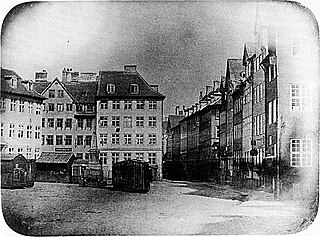
In Denmark, photography has developed from strong participation and interest in the very beginnings of the art in 1839 to the success of a considerable number of Danes in the world of photography today.
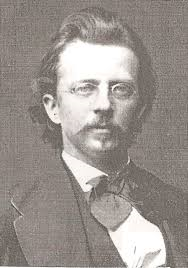
Kristen Feilberg or Christen Schjellerup Feilberg was an early Danish photographer who is known mainly for his images captured far beyond the borders of Denmark. From the 1860s until the 1890s, Feilberg participated in expeditions to Sumatra, Singapore, and Penang. In 1867, he exhibited photos at the Paris World Exposition and around 1870 he joined an expedition to the Batak lands of North Sumatra with the Dutch explorer C. de Haan from which he returned with 45 successful "photogrammes".

The Indonesian island of Sumatra is the sixth largest island in the world. The rich ethnic diversity and historical heritage in Sumatra is reflected in the range of architectural styles in the island. The vernacular style is the native Sumatran ethnic groups architecture of dwellings, while the Hindu-Buddhist architecture reflected through the cultural historical heritage of candis built in Sumatra. The third wave is Islamic architecture adopted in mosques and palace in Sumatra, especially in Aceh, North Sumatra, and Malay cultural sphere in the island.
Auguste Bruno Braquehais was a French photographer active primarily in Paris in the mid-19th century. His photographic work documenting the 1871 Paris Commune is considered an important early example of photojournalism. While largely forgotten after his death, his work was rediscovered during preparations for the Commune's centennial in 1971, and his photographs have since been the exhibited at numerous museums, including the Musée d'Art et d'Histoire, the Musée d'Orsay, and the Carnavalet Museum.

The participation of women in photography goes back to the very origins of the process. Several of the earliest women photographers, most of whom were from Britain or France, were married to male pioneers or had close relationships with their families. It was above all in northern Europe that women first entered the business of photography, opening studios in Denmark, France, Germany, and Sweden from the 1840s, while it was in Britain that women from well-to-do families developed photography as an art in the late 1850s. Not until the 1890s, did the first studios run by women open in New York City.
Fine art nude photography is a genre of fine-art photography which depicts the nude human body with an emphasis on form, composition, emotional content, and other aesthetic qualities. The nude has been a prominent subject of photography since its invention, and played an important role in establishing photography as a fine art medium. The distinction between fine art photography and other subgenres is not absolute, but there are certain defining characteristics.
Jacobus Anthonie Meessen was a Dutch photographer who took more than 250 portraits and landscapes of the Dutch East Indies between 1864 and 1870. Born to a carpenter in Utrecht, Meessen worked in that trade in the Indies before marrying in the Netherlands in the early 1860s. He returned to the colony in 1864, intent on documenting its land and people. He worked mostly in the capital of Batavia, Java, and Padang, Sumatra; he also photographed Bangka, Belitung, Borneo, and Nias.

Carl Julius Herman Salzwedel was a photographer in Java, Dutch East Indies during the late 19th century. He photographed people and architectural subjects. In the 1870s he partnered with Isidore van Kinsbergen at a portrait studio in Surabaya. Salzwedel then established his own successful studio in the city in 1879. Along with Charls & Van Es & Co (1884–1912) and O. Kurkdjian & Co (1888–1936), it was one of the best known photography studios in the city.
Philip Adolphe Klier, also known as Philip Klier, was a German photographer, who arrived in Burma as a young man around 1865 and spent the rest of his life there. Mainly working as self-trained photographer and businessman, Klier took hundreds of photographs at the end of the 19th century during the British colonial period in Burma. His photographs, taken both in his studio as well as on location, were sold as picture postcards for foreign visitors. They have been published in several books and collected in public archives. Among a small number of other photographers, Klier is considered as one of the earliest professional photographers in the history of today's Myanmar.
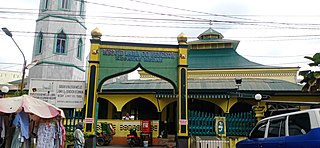
Gang Bengkok Old Mosque, is a mosque located in Medan, North Sumatra, Indonesia. The Gang Bengkok Old Mosque is precisely located on Jalan Mesjid, Kesawan, West Medan Districy, Medan. Gang Bengkok Old Mosque was built by a merchant and Kapitan from Guangdong, China, named Tjong A Fie. This mosque was first built in 1885, but the renovation was completed in 1889. This mosque was then handed over by Tjong A Fie to the Deli Sultanate, namely during the reign of Sultan Deli Sultan Ma'mun Al Rashid.


















